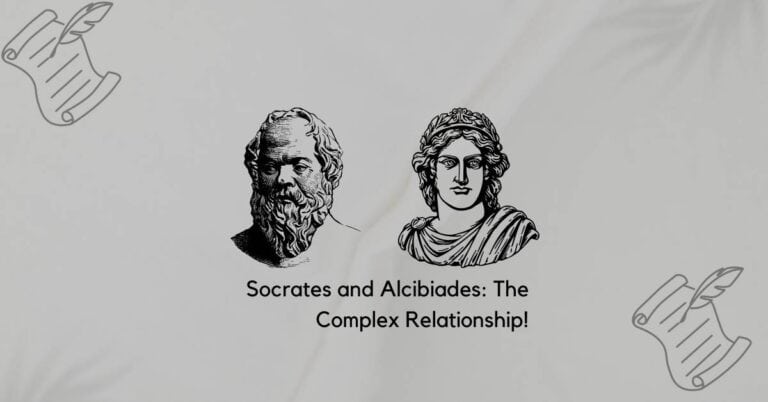Socratic Method of Teaching: The Magical Power of Inquiry!
Ever wonder how a simple question can transform a classroom? The Socratic method of teaching does just that, sparking curiosity and critical thinking in students.
The Socratic method is a teaching technique that uses questions to encourage students to explore complex ideas. Named after the Greek philosopher Socrates, it’s all about dialogue and deep thinking. This method helps students develop critical thinking skills by challenging their assumptions and encouraging open-ended discussion.
In this blog post, we’ll dive into the Socratic method of teaching, exploring its core principles, benefits, and practical applications. By the end, you’ll understand how this ancient technique can revolutionize modern education and enhance student engagement and learning.
1. What is the Socratic Method?
Definition and origins of the Socratic method:
The Socratic method is a form of cooperative argumentative dialogue. It is based on asking and answering questions to stimulate critical thinking and illuminate ideas. This method traces its origins to ancient Greece, specifically to Socrates, a philosopher known for his unique approach to teaching.
Key characteristics of the method:
- Open-ended questions: These questions do not have straightforward answers. Instead, they require students to think deeply and explore various aspects of a topic.
- Dialogue: The method relies on dialogue between the teacher and students, or among students themselves. This back-and-forth interaction helps clarify concepts and ideas.
- Critical thinking: The method encourages students to analyze, evaluate, and synthesize information. It pushes them to question their assumptions and consider different perspectives.
The role of Socrates in developing this teaching approach: Socrates developed this approach as a way to engage his students in a deeper exploration of ideas. He believed that by asking probing questions, he could help students uncover contradictions in their thinking and arrive at a clearer understanding of the truth. Rather than providing direct answers, Socrates used questions to guide his students toward self-discovery and independent thinking. His aim was to cultivate a mindset of continuous inquiry and critical reflection.
Core Principles of the Socratic Method
The use of questioning to stimulate critical thinking: At the core of the Socratic method is the use of questioning. These questions are designed to challenge students’ preconceived notions and stimulate deeper thinking. For example, instead of asking, “What is justice?” a Socratic question might be, “Can justice exist without equality?” This type of question forces students to consider underlying principles and to articulate their reasoning.
Encouraging dialogue and debate: Dialogue and debate are essential components of the Socratic method. Through discussion, students are exposed to different viewpoints and are encouraged to defend their own positions. This process helps them develop their reasoning and argumentation skills. It also fosters a collaborative learning environment where students learn from each other.
The importance of fostering an inquisitive mindset: The Socratic method places a strong emphasis on fostering an inquisitive mindset. It encourages students to be curious and to question everything. This approach helps them become independent thinkers who are not satisfied with superficial answers. Instead, they learn to delve deeper into topics and to seek out a more profound understanding. By cultivating this mindset, the Socratic method prepares students for lifelong learning and intellectual growth.
In summary, the Socratic method is a powerful teaching tool that promotes critical thinking, dialogue, and an inquisitive mindset. It challenges students to question their assumptions and to engage deeply with the material. By understanding and applying the principles of the Socratic method, educators can create a dynamic and intellectually stimulating learning environment.
2. Benefits of the Socratic Method
Enhancing Critical Thinking Skills
How the method promotes deep understanding: The Socratic method promotes deep understanding by pushing students to think critically and question their assumptions. Instead of passively receiving information, students actively engage with the material. This method requires them to analyze concepts, evaluate arguments, and synthesize information, leading to a more profound comprehension of the subject matter.
Examples of questions that provoke thoughtful analysis:
- “What is the underlying principle behind this idea?”
- “Can you provide an example that supports or refutes this argument?”
- “How would you respond to a counterargument on this issue?”
- “What are the potential consequences of this perspective?” These types of questions challenge students to think deeply and consider multiple angles of a topic, fostering critical thinking and intellectual growth.
Encouraging Active Learning
The role of student engagement in the learning process: Active learning is at the heart of the Socratic method. Students are not just passive recipients of knowledge; they are active participants in the learning process. This engagement helps them retain information better and develop a deeper understanding of the material. By encouraging students to ask questions and engage in discussions, the Socratic method makes learning a dynamic and interactive experience.
Strategies for implementing the Socratic method to foster active participation:
- Prepare thought-provoking questions: Plan questions that stimulate discussion and critical thinking.
- Create a supportive environment: Encourage open dialogue where students feel safe to express their ideas.
- Facilitate, don’t dominate: Guide discussions without overshadowing students’ voices. Allow them to explore ideas independently.
- Use small groups: Break students into small groups to discuss questions before sharing with the larger class. This can increase participation and confidence. These strategies help foster an environment where active learning thrives, making the educational experience more engaging and effective.
Improving Communication Skills
Developing articulate and reasoned responses: The Socratic method helps students develop articulate and well-reasoned responses. By regularly participating in discussions and debates, students learn to express their thoughts clearly and logically. They practice backing up their arguments with evidence and reasoning, which enhances their ability to communicate effectively.
The impact on students’ ability to argue effectively and persuasively: Engaging in Socratic dialogue improves students’ ability to argue effectively and persuasively. They learn to consider different perspectives, anticipate counterarguments, and respond thoughtfully. This practice not only sharpens their debate skills but also prepares them for real-world situations where persuasive communication is key. Students become adept at constructing coherent arguments and presenting their ideas convincingly.
In summary, the Socratic method offers significant benefits in enhancing critical thinking, encouraging active learning, and improving communication skills. By incorporating this method into the classroom, educators can create a more engaging and intellectually stimulating learning environment that prepares students for future academic and professional success.
3. Implementation of the Socratic Method in the Classroom
Practical Steps for Teachers
Preparing questions in advance: Effective use of the Socratic method starts with preparation. Teachers should develop a list of thought-provoking questions ahead of time. These questions should be open-ended and designed to stimulate discussion and critical thinking. For example, instead of asking, “What is the capital of France?” ask, “How might France’s history have been different if its capital were Marseille instead of Paris?”
Creating a supportive environment for open dialogue: Creating a classroom atmosphere where students feel safe to express their ideas is crucial. Encourage students to share their thoughts without fear of ridicule. Emphasize respect for all viewpoints and foster a sense of community. Use positive reinforcement to validate contributions, which helps build confidence and encourages participation.
Techniques for guiding discussions without dominating them: Guiding discussions effectively means facilitating rather than dominating. Ask follow-up questions to delve deeper into students’ responses. Encourage students to respond to each other rather than always directing their answers to the teacher. Use prompts like, “Can anyone add to that point?” or “Do you agree or disagree with this perspective, and why?” This approach keeps the discussion student-centered and dynamic.
Challenges and Solutions
Common obstacles in using the Socratic method: Implementing the Socratic method can come with challenges. Students might be reluctant to participate, or discussions might veer off-topic. Some students may dominate the conversation, while others remain silent. Teachers might also struggle with finding the right balance between guiding and allowing freedom in discussions.
Strategies for overcoming these challenges:
- Reluctant participants: Use small group discussions to make students more comfortable. Encourage quieter students by directly asking for their input.
- Staying on topic: Gently steer discussions back on track by summarizing key points and refocusing the conversation. Use phrases like, “Let’s circle back to our main question.”
- Balancing participation: Establish ground rules to ensure everyone has a chance to speak. Use techniques like “think-pair-share” to give all students a voice.
Tips for maintaining a balanced and respectful classroom atmosphere: Maintaining a balanced and respectful atmosphere is key to the success of the Socratic method. Set clear expectations for respectful dialogue from the outset. Address any disrespectful behavior immediately and reinforce the importance of listening to and valuing all contributions. Model respectful behavior yourself, demonstrating how to engage with differing viewpoints constructively. Regularly remind students of the goals of Socratic dialogue: to learn from each other and to deepen understanding.
In summary, implementing the Socratic method in the classroom involves careful preparation, fostering a supportive environment, and guiding discussions effectively. While there are challenges, they can be overcome with thoughtful strategies and a commitment to maintaining a respectful and balanced dialogue. By following these practical steps, teachers can successfully integrate the Socratic method into their teaching, enriching the learning experience for their students.
4. Socratic Method in Different Educational Contexts
Application in K-12 Education
Adapting the Socratic method for younger students: Adapting the Socratic method for younger students requires simplifying questions and using age-appropriate language. For elementary students, start with basic questions that encourage them to describe and explain their thinking. For instance, instead of asking, “What is justice?” you might ask, “What does being fair mean?” As students grow older, you can gradually introduce more complex questions and concepts.
Examples of successful implementation in elementary and secondary schools: In elementary schools, teachers have successfully used the Socratic method during storytime. After reading a story, teachers ask questions like, “Why do you think the character did that?” This helps students think critically about the story. In secondary schools, history teachers might use the method to explore historical events. Questions such as, “What were the causes of the Civil War?” encourage students to think deeply and engage in meaningful discussions.
Application in Higher Education
The role of the Socratic method in college and university settings: In higher education, the Socratic method is a powerful tool for fostering deep understanding and critical analysis. It encourages students to engage with complex theories and concepts. Professors use it to create an interactive and dynamic learning environment where students actively participate in their education.
Case studies of its use in various disciplines: In law schools, the Socratic method is a staple. Professors use it to challenge students to think on their feet and articulate their understanding of legal principles. In philosophy courses, the method helps students grapple with abstract concepts and develop their own viewpoints. Business schools also use it to analyze case studies, encouraging students to consider multiple perspectives and develop strategic thinking skills.
Socratic Method in Online Learning
Challenges and opportunities for using the method in virtual classrooms: Using the Socratic method in online learning comes with its challenges. It can be harder to facilitate real-time discussions and gauge students’ engagement. However, it also offers opportunities. Online platforms can provide diverse tools for interaction, such as discussion boards and breakout rooms.
Tools and techniques for effective online Socratic discussions: To implement the Socratic method online, use video conferencing tools to create real-time discussions. Breakout rooms can facilitate small group discussions, making it easier for students to engage. Discussion boards can allow for ongoing dialogue, where students post their responses to Socratic questions and engage with their peers’ ideas. Interactive tools like polls and quizzes can also keep students engaged and provide immediate feedback.
In summary, the Socratic method can be adapted to various educational contexts, from K-12 to higher education and online learning. By tailoring the approach to suit the needs of different age groups and learning environments, educators can harness the power of the Socratic method to enhance critical thinking, engagement, and communication skills.
The Socratic method emphasizes the importance of questioning and dialogue in exploring philosophical concepts. To deepen your understanding of various approaches, including the Socratic method, check out our comprehensive guide on methods of philosophizing. This blog explores different techniques that can enhance your philosophical inquiries and teaching methods.
Conclusion
The Socratic method of teaching, rooted in the practices of the ancient philosopher Socrates, remains a powerful educational tool. It enhances critical thinking by encouraging students to question and analyze deeply. The method promotes active learning and engages students in meaningful dialogue. Implementing the Socratic method in various educational contexts, from K-12 to higher education and online learning, offers significant benefits.
Personally, the Socratic method stands out as a transformative approach to education. It challenges both teachers and students to think more critically and engage more deeply with the material. By fostering an environment of inquiry and dialogue, it cultivates a love for learning and a deeper understanding of complex ideas.
Educators, consider integrating the Socratic method into your teaching practices. Reflect on how you can use questioning to stimulate critical thinking and encourage active participation in your classroom. For further exploration, read about Socrates and his techniques, and experiment with implementing this method in your lessons. The results might surprise you and your students, leading to richer, more engaging educational experiences.



